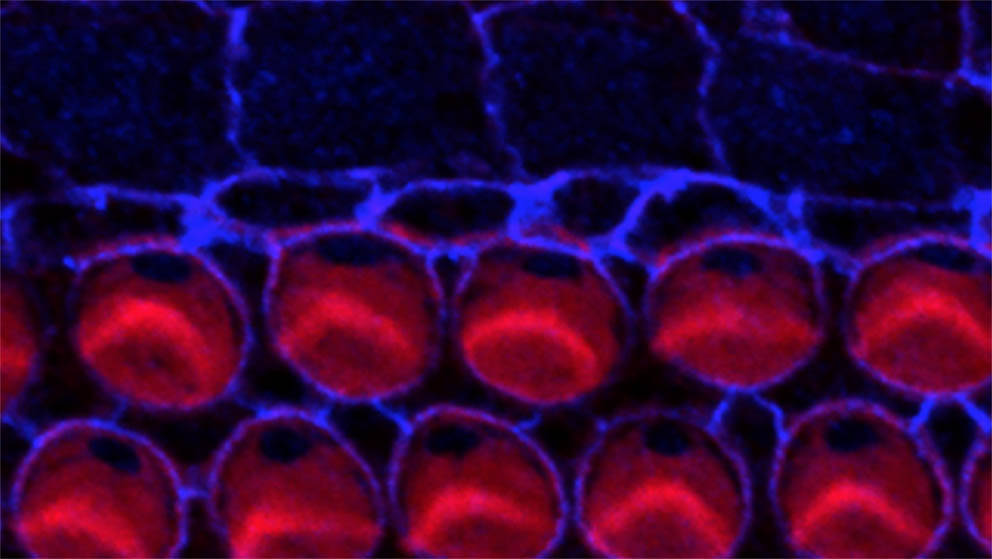 Jackson Laboratory Assistant Professor Basile Tarchini, Ph.D., who explores how the inner ear develops, has received a five-year grant totaling $1,859,375 from the National Institute on Deafness and Other Communication Disorders (NIDCD).
Jackson Laboratory Assistant Professor Basile Tarchini, Ph.D., who explores how the inner ear develops, has received a five-year grant totaling $1,859,375 from the National Institute on Deafness and Other Communication Disorders (NIDCD).
The funding will support Tarchini’s studies into how defects in the architecture of sensory cells perceiving sounds cause hereditary hearing deficits.
In the inner ears of mice, humans and other mammals, bundles of hairlike protrusions called stereocilia are vital to normal hearing. Normal inner ear stereocilia grow in a “staircase” formation, with short-to-tall graduation of hairs in the bundle, arranged like kids in a class photo.
“The staircase-like architecture of the hair bundle is essential for hearing and considered instrumental for direction-sensitivity to sound stimuli,” Tarchini says, “but remains largely unexplained at the molecular level.”
His laboratory is focusing on how a protein complex known as mInsc-LGN-Gαi drives the asymmetric stereocilia growth across rows during hair cell development. The absence of these proteins during prenatal development results in stunted stereocilia with a shallow staircase, corresponding to hearing defects in Chudley-McCullough syndrome and other hereditary syndromes.
In a paper recently published in Development, Tarchini and colleagues demonstrated that mouse models lacking LGN or Gαi fail to develop properly structured stereocilia and exhibit hearing deficits.
National Institute on Deafness and Other Communication Disorders Grant Number: 1R01DC015242-01A1: Hair Cell Polarization and Sensory Bundle Development